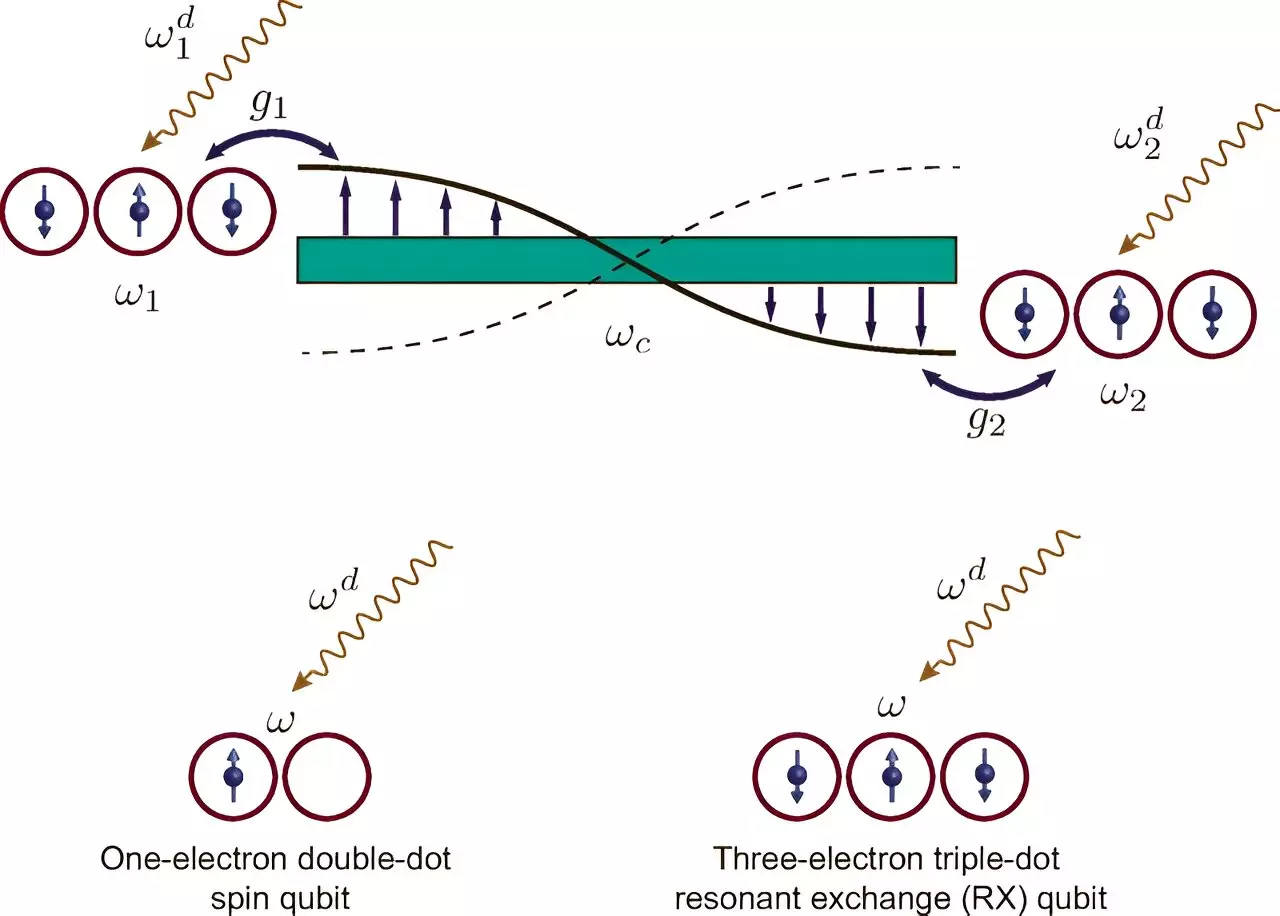In the realm of computational science, quantum bits, or qubits, represent a significant departure from the classic binary bits that underpin traditional computing systems. While classical bits exist in one state—either a zero or a one—qubits challenge this binary limitation, existing in multiple states simultaneously thanks to principles of quantum mechanics. This capability allows quantum computers to process information in ways that classical supercomputers cannot, potentially performing complex calculations exponentially faster.
Despite their theoretical advantages, the practical realization of quantum computers is fraught with challenges. Specifically, for quantum computing to reach its pinnacle, systems must integrate millions of qubits into a working model. However, controlling such a large number of qubits requires complex electronic systems that are not only intricate but also challenging to scale. Recent strides made by researchers, particularly a team led by physicist Vanita Srinivasa from the University of Rhode Island, offer hope for overcoming these significant hurdles.
One of the core challenges in scaling quantum processors lies in the ability to control individual qubits simultaneously while also allowing them to interact or entangle with one another. Each qubit operates at a specific frequency, and efficiently achieving both individual control and entanglement becomes increasingly difficult as the number of qubits rises. The research led by Srinivasa and her colleagues proposes a modular system that innovatively links qubits over significant distances, enabling them to collaborate effectively in performing quantum operations.
The team’s groundbreaking paper, published in the journal PRX Quantum, outlines a mechanism where oscillating voltages can be applied to qubits. This approach effectively generates additional frequencies for each qubit, subsequently permitting linkages among multiple qubits without necessitating all qubits to be tuned to an identical frequency. This development could significantly ease the scaling process for quantum processors, making it easier to extend their capabilities efficiently.
The advent of advanced semiconductor technologies provides an attractive solution for constructing quantum processors. Modern semiconductor fabrication techniques already yield chips housing billions of transistors, representing a robust platform for developing compact qubit systems. By exploiting the spins of electrons in semiconductor materials, researchers can not only create qubits of diminished size but also enhance the stability and integrity of the quantum information being processed.
Despite these promising advances, the straightforward aggregation of more spin qubits and their control circuitry into a single array presents inherent challenges. The researchers’ innovative strategy tackles this scaling issue head-on by offering a methodical approach that demonstrates various means to entangle spin qubits over expansive distances while simultaneously allowing for frequency variance.
Srinivasa likens their modular scaling approach to assembling a large structure from fixed-size LEGO blocks that can be connected with robust, longer connectors capable of maintaining the integrity of the overall structure. This modular vision not only delights in its conceptual simplicity but also embodies the practical realities of quantum computation, where flexibility and space for control circuitry are paramount.
What remains uncharted waters, however, is the demonstration of fully modular quantum processors based on semiconductor technology. Different qubit types and their respective interaction modalities must be scrutinized; however, the research focuses on quantum dot-based spin qubits that communicate via microwave photons housed within superconducting cavities. Such cavities, which are inherently larger than quantum dots, play a critical role in facilitating the required interactions.
Significantly, the research highlights a novel, tunable framework that allows for connections between qubits without necessitating synchronicity in their frequencies. By implementing oscillating voltages, the scientists reveal how each spin qubit can generate extra frequency options, thus allowing for varied resonance conditions when entangling two qubits. This flexibility means that each qubit can interact under different conditions, dramatically simplifying the process of adding new qubits into an existing system and enabling a broader range of quantum operations.
Moreover, the paper asserts that this new entangling method exhibits reduced sensitivity to undesired photon leakage from the cavities, fostering stronger, more reliable links between quantum components. The interplay of adaptable resonance matching, expanded types of entangling operations, and minimal photon leakage considerably enhances the viability of developing modular quantum processors based on semiconductor technology.
As quantum computing navigates the complex waters of technological evolution, the work of Srinivasa and her colleagues represents a crucial step toward realizing the full promise of this revolutionary computational paradigm. Their modular approach demonstrates that the future of quantum computing hinges not only on integrating qubits but also on innovating their interactions. With practical frameworks like this, the dream of a powerful, efficient quantum computer becomes increasingly achievable—a potential game-changer for numerous fields ranging from cryptography to artificial intelligence. As this research unfolds, it is clear that the quantum future is brimming with potential, and the journey has only just begun.

